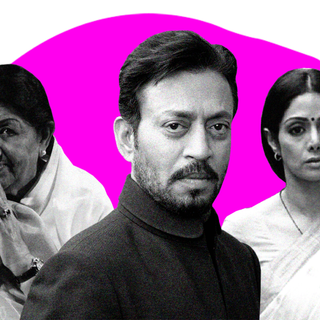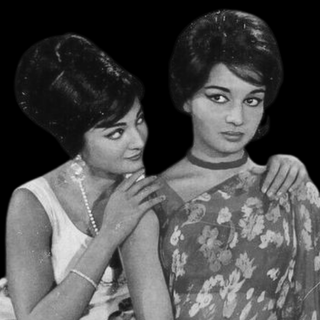
The Mysterious Affair of the Cultural Decline of Whodunits
The whodunit only reinforces the existing political and social status quo — a template that feels woefully out of date.

In the luxurious cruise ship S.S. Karnak, setting sail on the waters of Nile, a crime most gruesome has been committed. The guests onboard include six to seven people, each with a story pitchy enough to inspire suspicion. Who did it, and how? A detective known both for his eccentricities and “little gray cells” quickly springs to work: No one leaves until the perpetrator is found. The murderer, the motive, and method are soon revealed – all neatly delivered in a stunning display of rational thinking. The crime is solved, social order restored.
The recently released Agatha Christie adaptation Death On the Nile is another installment in a never-ending series of detective stories in pop culture. These whodunits are not so much about the crime as they are about solving a puzzle. The fourth wall fades away, the audience is lured to the crime scene, and the clues and suspects have been scattered, waiting to be made sense of.
But there’s something amiss about these cat-and-mouse stories. Why the crime happens in the first place is a question that lingers in the background but is never found important enough to feature in the exposition.
The whodunit – a thriving part of an already contextless canon of crime fiction – is then left defanged in its power, only reinforcing the existing skewed structures of political and social status quo.
“I think it comes down to the shape of the whodunit,” explained Knives Out director Rian Johnson, when speaking of its relevance today. “A crime is committed, which throws the world into moral chaos. But a detective figure, through reason and logic, solves the crime and restores the world to a state of order. That sense of comfort is incredibly reassuring in the world we live in.”
It is this template that reinforces tropes, demanding little of its readers and viewers other than blazing through a tantalizing crime story. For one, there’s a moral flaw in the way we frame violence and crime; these are “aberrations” of the individual, which at once must be corrected. But crime doesn’t just happen – it is a byproduct of systemic neglect and abuse. The whodunit spends reams of pages and movie shots in pursuit of the who,mirroring a reality that villainizes and criminalizes those who dare defy social order. Then the crime in itself becomes the red herring to squeal away focus from the systemic inadequacies that precede the criminal. The limitations are not as much about the storytelling as it is about the story told.
Related on The Swaddle:
Why Do True Crime Stories Fascinate Us?
This format worked well for a society under the shadows of war in the 20th century. Agatha Christie grew remarkably during this time, selling close to an average of 10,000 copies a year. Her tales of crime and punishment quickly earned her the status of the queen of the “golden age of detective fiction,” a time when the genre responded to a society in mayhem. Justice almost always countered evil in these narratives.
The anxiety has transformed over the years. The tales of murder, betrayals, and secrets unfold in a society where systemic neglect, patriarchy, unequal social institutions, and ideological bigotry all are in full form as the four horsemen of the Apocalypse. But the way we understand violence and justice has shifted too; perhaps owing to the fecundity of crime fiction writing, the podcast boom with true crime, or an awareness of the way the carceral system cages the mind without ever probing structural inadequacies. As prisons have become overcrowded and people are denied care and proper hygiene, the innocent fight for the right to defend themselves, and the ability to reform and return back to society is a lost promise.
We are now more aware as a society of the sociological factors that lead to crime and our views on rehabilitation and justice have also changed considerably. But our whodunits have not caught up. If murder is not contained to an individual, why should the mystery be?
The context, or lack thereof, of the committed crime defines how people engage with these stories. And the question of who feels incomplete today. How is the burden of suspicion different for the different guests in a gathering? What all led to the crime taking place? What were the other, less explicit crimes committed before this one, which enabled it?
These contextless, formulaic stories demand that the focus remains on preserving the status quo, instead of critiquing it. “… you approach the story from the point of view of people who have a lot to lose if things change,” notes Kopal, Professor of English at Ambedkar University, New Delhi. In Death On the Nile, the cruise ship passengers include a wealthy heiress, a renowned jazz singer, a painter, an aristocrat-turned doctor. “There are events that can possibly turn their world topsy-turvy; these heroes and heroines have to stop these on all accounts.” The structures of class, caste, and privilege go uncritiqued – echoing and perpetuating the fissures of the real world. The “innocent” and “evil” binary conveniently forgets that there is innocence even in the heart of darkness, and evil in the spirit of innocence.
The “good” detective is always the source of wisdom and correction of the moral order thrown askew by the individual. It is forgotten that as agents of the social and capitalistic institutions, these figures in power enforce a civility meant to distract focus from gaps in welfare. The function of crime thrillers like whodunits “is then far more conservative,” as Kopal puts it.
Related on The Swaddle:
Perhaps, the fatal flaw of the whodunit lies in its “all is well that ends well” framing. “By that sense, it can have a sense of artificially resolving discordant notes in society which you otherwise can’t outside the book. But you have to deliver that within the book; by the end you have a reestablishment of social order. The criminal is caught, and everyone goes back to a relative sense of safety,” explains Kopal.
Is it fair to demand whodunits to be more politically reflexive? “All literature has an imperative to be political … it needs to uncover the workings of power, to correct these, where necessary and to always speak truth to power,” says Christel Devadawson, Professor of English at University of Delhi. Further, “when you’re talking about crime, you’re talking about justice – and these are all political questions,” adds Kopal.
One can argue then the onus lies on the audience to travel within their own minds and figure out the labyrinth these systems of inequity create. But this again shifts the burden of reforming a broken social order on the individual; the expectation is for a heterogeneous, disjointed society to try and critique structured inequalities. In that sense, murder mysteries as a form of storytelling carry an impetus to help people find truths buried within themselves and the social order. It could dare to envision a world where the social fissures are never reduced to footnotes.
This is why many termed the modern remake of Knives Out (2019) an important inversion of the whodunit template; it created a narrative where the why was given just as much significance as the crime, if not more. According to Christel, these re-workings remind us of possibilities within the genre – of the comedy, fallibility, the cut-and-thrust of dialogue, that we sometimes sideline.
Kopal finds inspiration from other sub-genres like noir fiction, one seemingly construed as left, in crime fiction. In an article titled “Why noir is left-wing, thrillers are right-wing,” lesbian feminism crime fiction writer Val McDermid argues that noir fiction or hard-boiled fiction gives greater space given to the marginalized of the society who are really at the dregs: people who are old, have different sexualities, and other intersections of marginalization. It sort of becomes a vehicle to represent their lives and so on. The narrative then devotedly shows how they are at the receiving end of how unequal the world is, instead of protecting the status quo of the privileged. The challenge is to create a world where the question of who killed the victim is both – necessary and irrelevant at once.
Otherwise, the whodunit then rattles a tale too familiar. Mrs. Ariadne Oliver, a recurrent character in Christie’s world, notes: “When it all comes out, [the killer] seems, somehow, so inadequate. A kind of anticlimax.”
Saumya Kalia is an Associate Editor at The Swaddle. Her journalism and writing explore issues of social justice, digital sub-cultures, media ecosystem, literature, and memory as they cut across socio-cultural periods. You can reach her at @Saumya_Kalia.
Related


Why Celebrity Deaths Often Feel Like Personal Tragedies
